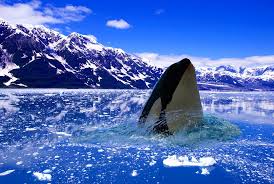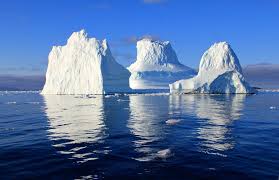What is polar ice?« Back to Questions List
|
Polar ice is the ice that covers the earth’s Polar Regions. It makes up 10% of the earth’s surface. Sea ice, glaciers and ice sheets together form the polar ice. Large packs of ice formed in the Polar Regions are polar ice caps. There are the Arctic ice cap of the Arctic Ocean and the Antarctic ice cap of the Antarctic Ocean. Scientists use satellites to measure the ice levels to see if they are growing or shrinking.
Sea ice is as a result of freezing of sea water. Winds, tides and currents keep the pack ice in constant motion and break it up into pieces, large and small called ice floes. Like floating islands, floes may drift apart and become separated by channels of open water that then freeze over. When floes collide, the ice creates a jumble of huge ice blocks. The sea ice keeps the region cold by reflecting the sun’s rays falling over letting only less heat stay on the region. Ice sheets and glaciers form when snow builds up faster than it can melt. The two largest ice sheets are in Greenland and Antarctica. Together, they contain 75% of the world's fresh water and can flood the entire continent.
Polar ice affects the Earth in many ways. It can change the water level of the oceans meaning if all this ice melted back into the ocean it would raise sea level by some meters. The ice can also affect the temperature and climate of an entire region, and alter the exchange of heat between the ocean and the air above. Nations close to the sea level are at danger due to the rising sea level as a result of global warming.
Why doesn’t Tundra region have trees?What are minerals?
|


